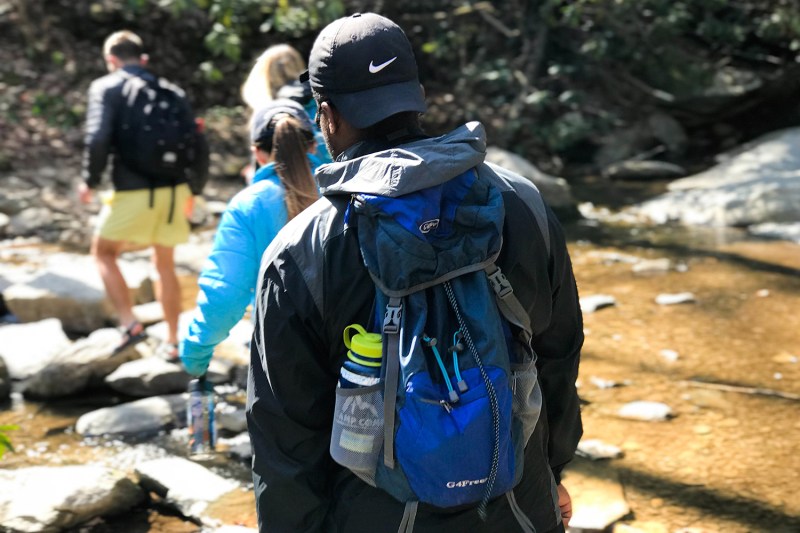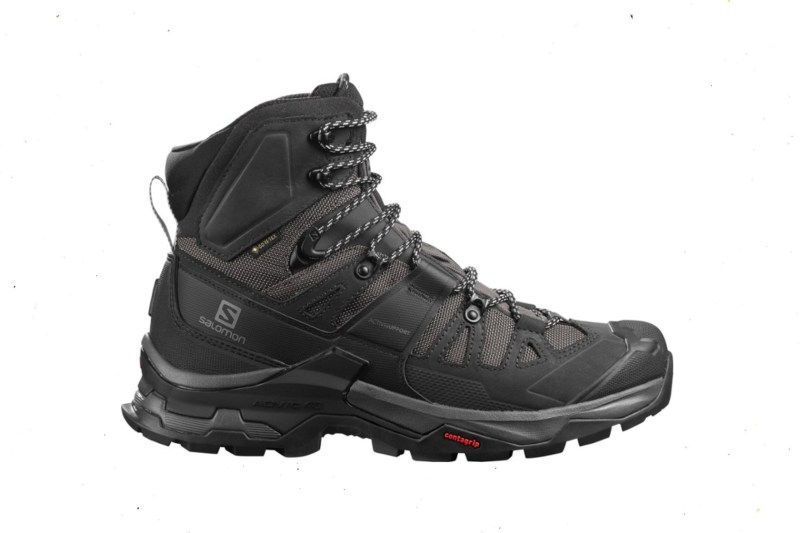
When it comes to hiking gear essentials, there are quite a few must-have items to safely take off down the trail. Unless you are hiking a paved trail or one that is incredibly well marked for the general public, it is important to pack all of these items whenever you set out. Whether you are heading into the backcountry or setting out on an unfamiliar trail in an area you explore often, the best hiking gear to have on hand can see you through tough situations should the worst happen. Injuries or even losing the trail are possibilities, so it’s best to be prepared.
Things like a compass and map, plenty of food and water — or a water purifier, a fire source such as matches or a lighter, and even sunscreen — are all things that should undoubtedly make it into your pack. A bivy or some kind of lightweight emergency shelter is also an absolute must-have for backcountry jaunts. But, our list of essential gear covers the best items to mark off your checklist each time you hit the trail. These items can also carry you through a number of terrains beyond your local area, too.
Clothing
Even if the temperatures are warm during the day, the weather always cools off when it gets dark. If you’ve been sweating all day as you climbed to the peak of a mountain or even across the floor of a desert valley, you’re going to feel that temperature change even more thanks to your body’s natural cooling system. That’s why it is always important to have both a change of shirts to dry off as well as an extra layer for warmth such as an insulating packable jacket or sweater.
REI Co-op Sahara Shade Hoodie

This hoodie covers all the bases and will easily become one of the most versatile pieces in your outdoor adventure closet. This hoodie is all about the fabric. The incredibly lightweight layer won’t chafe, and it will protect against harmful UV rays thanks to its UPF 50 rating. The fabric will wick away moisture to dry you off almost as quickly as the hoodie itself does. It’s also been treated with an antimicrobial agent to keep it from getting smelly. Though you can also get this in a long-sleeve shirt form, it never hurts to have an extra layer to cover your head.
Patagonia Nano Puff Jacket

Patagonia makes some of the best lightweight yet surprisingly warm jackets that pack down to almost nothing. The Nano Puff Jacket is a lighter weight than the down sweater jacket which makes it a great insulating layer for milder conditions or as an additional layer under a heavy-duty shell in colder temperatures. A major selling point for this jacket is that it retains 98% of its thermal efficiency when it’s wet, which means it will still serve well in keeping you warm even after being caught in a rain shower out on the trail. At 11.9 ounces, you’ll hardly notice the weight of the extra layer in your pack.
Footwear
Proper footwear is another incredibly important hiking essential. Many people will take off up a trail in sneakers, trail runners, or something else that’s too flimsy. While you can get away with hiking trails in something like a tennis shoe or trail running shoe when traversing mild terrains that do not have strenuous inclines or uneven ground, those won’t serve you well in the majority of places. Having a pair of
Salomon Quest 4 GORE-TEX Hiking Boots

These hiking boots are the real deal for almost any adventure you set out on. Though the Salomon Quest boots are quite heavy compared to trainers at 2.14 pounds, the weight is well worth the features. The Contagrip TD rubber soles of the boots have deeply cut grooves which will extend the life of the boots while digging into tough, mixed terrain anywhere you go. Designed to reduce fatigue under the strain of a fully-loaded pack, the boots also feature breathable GORE-TEX membranes to keep your feet dry. You’ll also find it surprisingly easy to move in these boots despite the higher cut over the ankle.
Astral Loyak Water Shoes

Astral Loyak Water Shoes are a great option to toss in your pack because they are water shoes that also perform well on land. They’re also stylish compared to typical mesh water shoes. These shoes allow you to feel what’s underfoot when you’re crossing water, but they can stand up to the rougher terrain of the banks. The drain holes will also help these to dry out quickly. At only 14.4 ounces, you’ll get a lot of use for the minimal space and weight added to your pack.
First Aid
You never know what’s going to happen on the trail. Even if the path is well-worn, a misplaced foot or a small trip could still make you wish you had a first aid kit. That’s why it’s always a good idea to keep one in your pack even if it is just a basic kit with the essentials. While you can get an ultralight kit with basic medicine, bandages, and other essential supplies for around $30, you can pay less than $10 more and get a more advanced kit.
Adventure Medical Kits Mountain Series Backpacker Medical Kit

This medical kit includes all of the basic materials you would find in a very basic first aid kit, but it also includes more advanced supplies. Though you might not need the advanced items very often, you’ll be so glad you had them should you need them. In addition to essential items like bandages, butterfly closures, trauma pads, nitrile gloves, and medicines for common ailments, the kit also includes a tincture of benzoin, an irrigation syringe, EMT shears, and even a hiking first-aid pamphlet should you need some guidance. Just keep in mind that you need to replace any of the items you use on the trail as soon as you can when you get home.
Multi-tool
A pocket knife is a good thing to have on hand, but a multi-tool is better. With more attachments and options, you’ll likely have something within your multi-tool that can handle whatever task it is you need to solve.
Gerber Suspension NXT Multi-Tool

This multi-tool is one of the best thanks to its compact butterfly design that quickly and easily unfolds. Just pull it out, snap it out and open whatever it is you need. The handles hold a wire stripper, Phillips screwdriver, three sizes of flat screwdrivers, an awl, file, ruler, can opener, bottle opener, and a lanyard point. There’s a pocket clip, but at just over six inches long, you can easily store this in the hip pocket of your pack too.
Backpack
Like great footwear, an awesome backpack is an invaluable piece of equipment when you’re out on the trail. Having something that is lightweight with a smart design for proper storage of all the essential gear you are carrying will make packing and unpacking so much easier.
Osprey Aether Plus 85 Pack

This pack might sound like overkill for basic hiking, but it’s well worth the investment if you’re looking for an insanely versatile pack. While these packs are expensive and you might be skeptical if you’ve heard all the hype around Osprey packs, it’s all true. These packs are total game-changers. Plus, Osprey offers a lifetime guarantee.
There are also 65- and 55-liter if you know you don’t need an 85-liter pack for longer backpacking trips. The suspension system, custom fit, and the LightWire frame make carrying the heaviest of loads a total breeze if you haven’t been using a quality pack before this one. The pack is also made of a water repellent material that will keep its contents dry. With extra compression straps, shove-it pockets, a separate sleeping bag compartment, and easy-access storage, you’ll have no trouble packing everything you need. Another favorite feature is the removable lid and FlapJacket cover. These are awesome because it means you can use the pack without the lid, which converts into a daypack for shorter hikes. It really is the best all-in-one backpack you can get.
Headlamp
A good headlamp or small flashlight is another essential item to pack for hiking should the time come when you unexpectedly get back after dark. If something is slowing you down like a twisted ankle or you just let the time slip up on you, walking back down the trail in the dark without light can be pretty tricky.
Black Diamond Spot 350 Headlamp

This headlamp is a great mid-range pick that can handle most situations. It features three light options include red light, floodlight, and spotlight. This allows you to concentrate the light however you need to. The beam distance also ranges from eight to 85 meters, so you’ll be able to see as far as you likely need to. Depending on how you manage and use your light, the headlamp will run for nearly four hours on high, 200 hours on low, and up to 36 hours on reserve. When it does die, just swap out the three AAA batteries for new ones and keep going. At three ounces, this is a great lightweight option too.
Trekking poles
Trekking poles are not always necessary for every hike but can be an incredibly helpful tool to have on hand. Whether you have an unexpected injury or the trail turns out to be a little slippery, trekking poles can be packed and pulled out should you need them.
Black Diamond Distance Carbon Z Trekking Poles

Though these poles are pricier, they weigh next to nothing, between 9.3 to 10.4 ounces depending on length, since they are made of carbon fiber and aluminum accents. The poles have been reinvented to be straighter and stiffer with reinforced joints. That means they won’t buckle as easily under pressure due to their lightweight material. The push-button lock and three-piece design allow the poles to break down into a compact size that can easily attach to a pack or even fit inside if need be. Foam grips are comfortable, and there are two different tips you can use for the poles.


